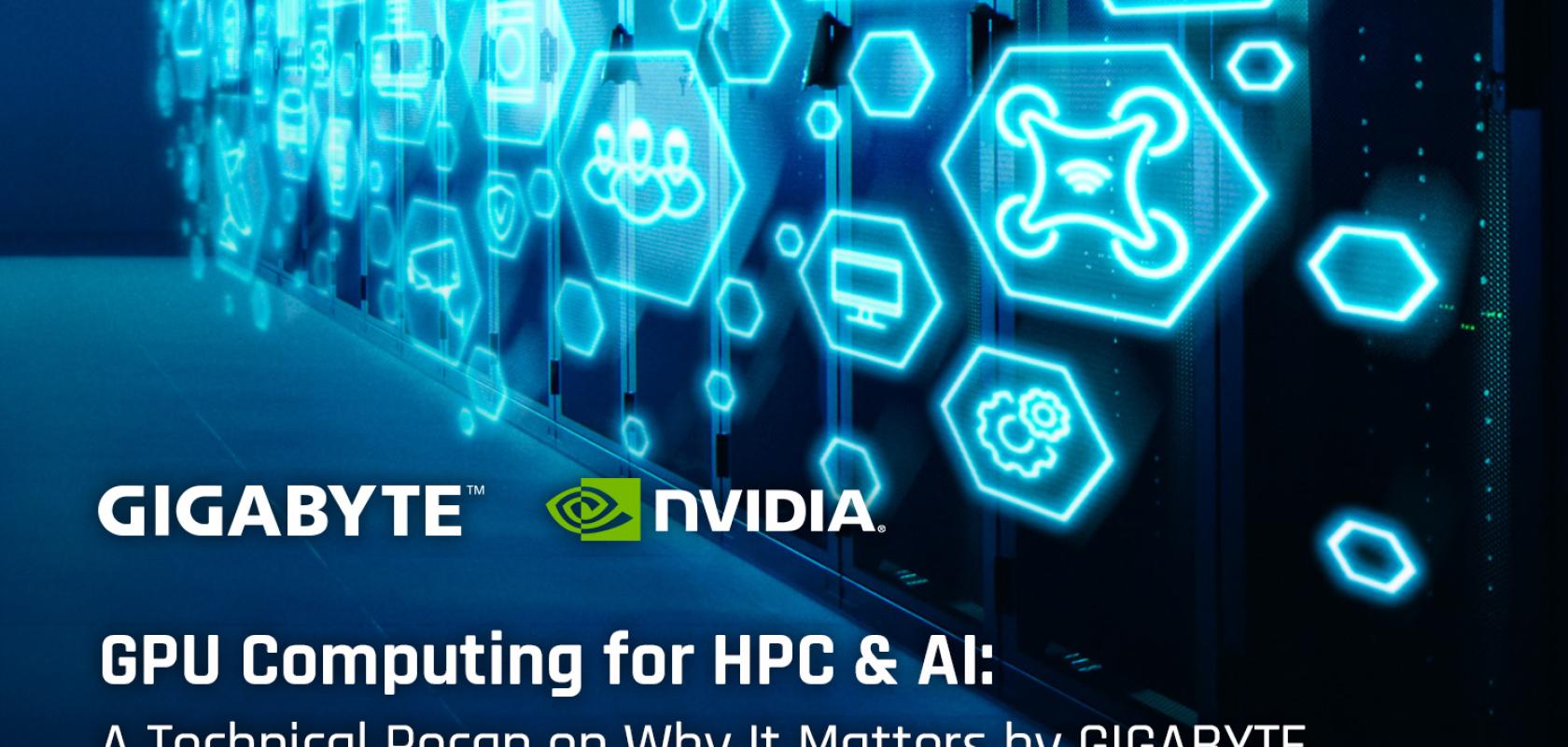High-performance computing (HPC) and artificial intelligence (AI) have become increasingly important in modern science and technology. HPC and AI require a vast amount of computation power, and one of the key enabling technologies that has driven the advancement of these fields is the graphics processing unit (GPU).
NVIDIA, the leading GPU technology company, has played a pivotal role in the development of GPU technology, and its GPUs have become a crucial component for accelerating HPC and AI workloads. GIGABYTE, an engineer, visionary, and leader in the world of HPC computing hardware, uses its hardware expertise, patented innovations, and industry leadership to create, inspire, and advance on GPU server solutions in partnership with NVIDIA. Renowned for over 30 years of award-winning excellence in motherboards and graphics cards, GIGABYTE is a cornerstone in the HPC community, providing businesses with server and data center expertise to accelerate their success.
NVIDIA GPU technologies have revolutionized High-Performance Computing (HPC) and Artificial Intelligence (AI) workloads, providing an exceptional level of performance, speed, and accuracy. The ability to process data at a faster rate has enabled researchers, scientists, and data analysts to solve complex problems in various domains, including weather prediction, drug discovery, and deep learning.
One of the most exciting developments in recent years has been the emergence of large language models (LLMs), such as OpenAI's GPT-3 and the latest GPT-4. These models are trained on massive datasets and can generate text that is often indistinguishable from human writing. However, LLM development requires enormous amounts of computational resources, which is where NVIDIA GPUs come in. For example, the latest NVIDIA H100 Tensor Core GPU can accelerate LLM training by up to 60x compared to CPUs alone. This speedup is achieved by mixed-precision training, which combines high-precision floating-point arithmetic with lower-precision arithmetic to reduce the memory requirements and increase the speed of computation.
NVIDIA GPUs are also being utilized extensively in scientific research. For example, researchers at the University of Tokyo used NVIDIA GPUs to simulate the behavior of proteins, which is essential for understanding how they interact with drugs and other molecules. The simulations required massive amounts of computational power, which would have been impossible without the parallel processing capabilities of GPUs. Similarly, researchers at the Oak Ridge National Laboratory used NVIDIA GPUs to simulate the behavior of a nuclear reactor, which could help to improve the safety and efficiency of nuclear power plants.
GPU Parallel Processing
GPUs excel at parallel processing, which makes them particularly suitable for handling HPC and AI workloads. Parallel processing is a method of dividing a task into smaller sub-tasks that can be executed simultaneously. GPUs can perform many calculations in parallel, while traditional central processing units (CPUs) execute instructions sequentially. This means that GPUs can perform complex calculations much faster than CPUs. The ability of GPUs to handle parallel processing is particularly useful for AI workloads, where deep learning algorithms require the processing of large amounts of data. GPUs can perform parallel processing in different ways. One approach is to use thousands of small, simple processing units that work together to complete a task. This approach is called a SIMD (single instruction, multiple data) architecture. Another approach is to use multiple processing units that can handle different tasks simultaneously. This approach is called a MIMD (multiple instruction, multiple data) architecture.
GPU Compute Cores and GPU Memory
The GPU compute cores, also known as Streaming Multiprocessors (SMs), are the fundamental components of NVIDIA GPU technologies. The SMs are designed to perform multiple arithmetic and logic operations in parallel, thereby enhancing the processing power of GPUs. Each SM contains several CUDA cores, which are responsible for executing instructions in parallel. For example, the NVIDIA H100 GPU has 16,896 CUDA cores and 528 Tensor Cores per GPU, making it capable of performing 66.9 teraflops of single-precision floating-point operations and 33.5 teraflops of double-precision floating-point operations.
NVIDIA GPUs have a unique memory architecture that enhances their performance and speed. The memory architecture includes multiple memory types, such as High Bandwidth Memory (HBM and HBM2), GDDR6X, and GDDR6. HBM/HBM2/HBM2e are designed to deliver high bandwidth, low latency, and high-capacity memory, making them ideal for HPC and AI workloads. For instance, the NVIDIA H100 Tensor Core GPU has up to 80GB HBM2e memory, providing a memory bandwidth of 2 terabytes per second. In contrast, GDDR6X and GDDR6 memory types are suitable for gaming and consumer applications.
Accelerating AI Workloads with Tensor Cores and Multi-GPU
Tensor Cores are a unique feature of NVIDIA GPU technologies that accelerate AI workloads, especially deep learning. The Tensor Cores are designed to perform mixed-precision matrix multiplication and accumulate operations with high accuracy, speed, and energy efficiency. Tensor Cores provide up to 20 times faster performance than traditional FP32-based matrix multiplication, allowing deep learning models to be trained faster and more accurately. The NVIDIA H100 SXM5 GPU has 528 Tensor Cores per GPU, making it capable of performing 495 teraflops of tensor operations.
Multi-GPU technologies, such as NVIDIA NVLink, allow multiple GPUs to work together in parallel to solve complex HPC and AI workloads. NVLink provides a high-bandwidth, low-latency connection between GPUs, allowing them to share data and perform parallel processing at a faster rate. NVLink is available in the NVIDIA H100 GPU (PCIe and SXM5), providing a maximum bandwidth of 900 gigabytes per second.
In conclusion, the use of GPUs for HPC and AI workloads has become increasingly popular over the past decade due to the many benefits they provide. These benefits include higher computational power, increased efficiency in performing matrix operations, and faster training and inference times. As the demand for high-performance computing and AI applications continues to grow, the use of GPUs is likely to become even more prevalent in the years to come. GIGABYTE therefore strives to provide the best-in-class GPU computing solutions for different use cases, with its largest GPU server line-up “the G-Series” in the market providing endless possibilities of GPU server configuration.
For additional information contact Gigabyte directly.


